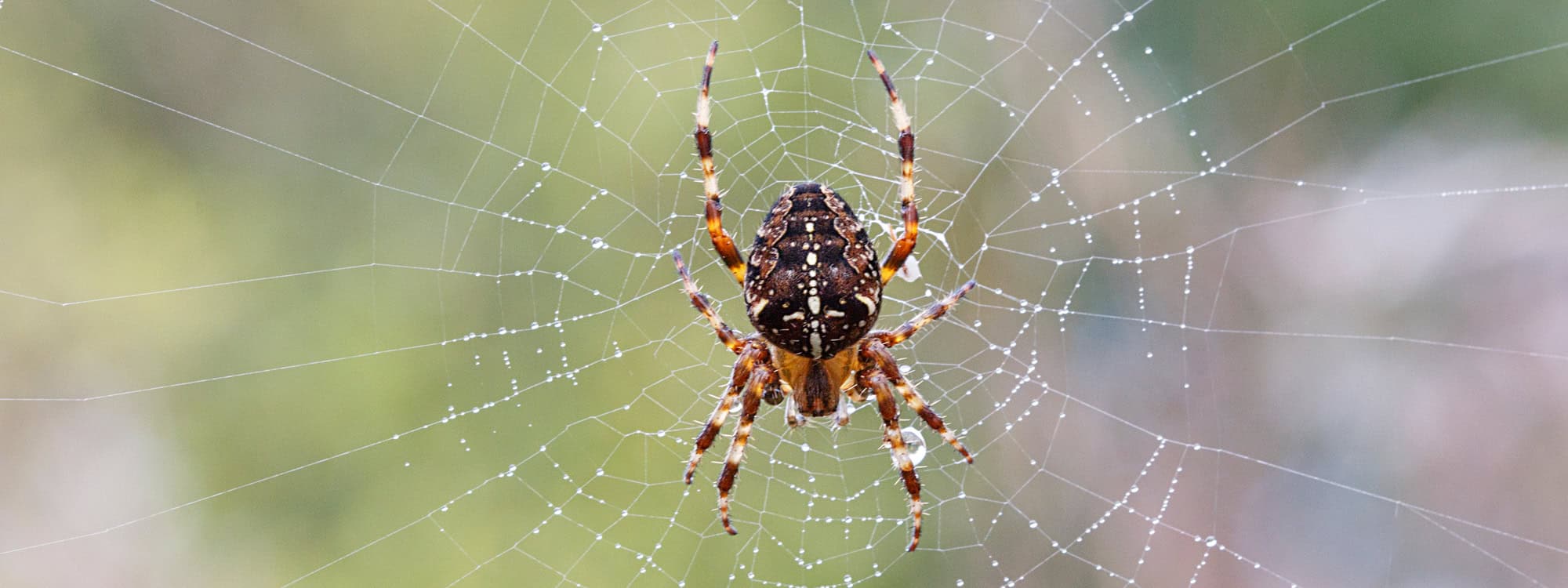Common Orb-Weaver Spiders
Identification: Common Orb-Weaver Spiders in Muskoka, Ontario, are easily recognized by their distinctive, circular webs and diverse coloration. Typically, these spiders range from 5 to 20 mm in body length, with females being larger than males. They exhibit a variety of colors including shades of red, yellow, and brown, and often have intricate patterns on their abdomens. Their legs are long and spiny, contributing to their ability to navigate and construct their complex webs.
Habitat: In Muskoka, Common Orb-Weaver Spiders favor environments with abundant vegetation where they can build their characteristic webs. They are commonly found in gardens, forests, and around homes. Orb-weavers thrive in areas with high insect activity, which provides them with ample food sources. Their webs are often constructed between plants, shrubs, or along the eaves of buildings, where they can easily intercept flying insects.
Diet: Common Orb-Weaver Spiders are skilled predators of flying insects. Their diet primarily includes mosquitoes, flies, moths, and other small insects that become ensnared in their webs. The spider’s venom immobilizes the prey, and digestive enzymes are injected to break down the insect’s tissues. The spider then consumes the liquefied prey, which provides essential nutrients for growth and reproduction.
Behavior: Orb-Weaver Spiders are known for their remarkable web-building skills. They construct large, spiral-shaped webs that are meticulously designed to capture flying insects. These webs are rebuilt each night, with the spider consuming and recycling old silk to maintain their trap. Orb-weavers are generally nocturnal, becoming most active in the late evening and early morning. They exhibit a relatively solitary lifestyle, with each spider establishing its own web and territory. Their webs also serve as a method of communication, with the spider often vibrating the web to detect the presence of prey or potential threats.
Prevention: While Common Orb-Weaver Spiders are generally harmless and beneficial for controlling insect populations, they can become a nuisance when their webs are constructed in unwanted areas. To manage their presence around homes, regular maintenance of outdoor spaces is recommended. This includes trimming back vegetation that may serve as web-building sites and removing old webs. Additionally, reducing outdoor lighting or using yellow bulbs can help decrease the attraction of flying insects to your home, thereby reducing the likelihood of orb-weaver spiders setting up residence.
Control: For homeowners seeking to control the presence of Common Orb-Weaver Spiders, physical removal of webs can be effective. Using a broom or similar tool to gently dislodge and remove webs from around the home helps to deter these spiders from settling in the area. In cases of significant infestation, applying insecticides designed for spiders can help reduce their numbers. It’s important to follow product instructions and apply treatments in a manner that minimizes impact on beneficial insects and other wildlife.
By understanding the habits and preferences of Common Orb-Weaver Spiders, homeowners can take proactive steps to manage their presence while appreciating the ecological benefits these spiders provide. For those looking to minimize spider-related issues, routine home maintenance and strategic pest management practices are key to maintaining a balanced and pest-free environment.

